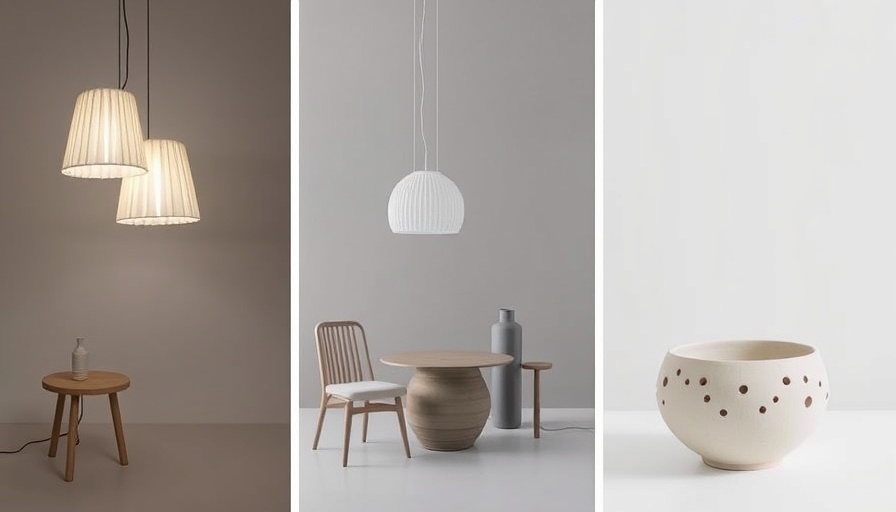
Designing Spaces for Remote Work: Trends to Consider
In the ever-evolving landscape of remote work, creating a comfortable and efficient workspace is essential. The recent NYCxDesign event showcased innovative furniture and decor trends, highlighting delicate fabric lights and exquisite ceramics that enhance not just aesthetics, but also ergonomic function. For digital nomads, these elements can transform any space into a sanctuary of productivity and creativity.
Embracing Delicate Fabric Lights
Lighting is more than just a utility—it's an experience that significantly affects mood and productivity. Delicate fabric lights, prominently featured in this year's NYCxDesign, offer warmth and versatility. These lights can create a soft ambiance that alleviates harsh glare and eye strain, an important consideration for those spending long hours in front of their screens. For instance, a simple fabric pendant lamp can diffuse light gently, helping reduce fatigue during extended work hours.
The Role of Ceramics in Workspace Design
Alongside lighting, ceramics are making a bold statement in workspace design. Unique ceramic pieces can serve functional roles while also adding character to your workspace. Consider incorporating handmade ceramic vases or pots not only as decor but as organizers for pens and stationery. Not only do these add a touch of artistry to your desk, but they also cultivate a sensory connection with your environment, which can stimulate creativity and keep you engaged.
Ergonomics Meets Aesthetics
As an ergonomics specialist, I often stress the importance of comfort in workspace design. The right furniture should not only look good but also support your body in maintaining health during long work hours. Consider adjustable desks that allow you to alternate between sitting and standing and partner them with supportive seating. If you're drawn to the aesthetic appeal of delicate fabrics, look for ergonomic chairs that incorporate soft, breathable materials that encourage good posture.
Creating an Inspiring Atmosphere
Your workspace should inspire productivity and creativity. By integrating elements from NYCxDesign, you can create a space that feels personal and energizing. Surrounding yourself with warm lighting, beautiful ceramics, and ergonomic solutions can create an environment that feels enjoyable and comfortable, motivating you to work efficiently.
Future Trends in Remote Workspace Design
Looking ahead, we can anticipate more trends that blend comfort with functionality. Innovations such as smart furniture equipped with technology to enhance productivity are on the rise. Expect to see more customizable options that cater to individual ergonomic needs while also appealing to a design-oriented aesthetic. As the lines between home and work continue to blur, the spaces we create will have a long-lasting impact on how we work.
Now, how can you implement these trends into your own workspace? Start by assessing your current environment. Identify areas you can enhance with thoughtful decor like fabric lights and ceramics, while also evaluating the ergonomic aspects of your desk and chair. Pay attention to the sensory details; they can make a significant difference.
As more people shift to remote work, the importance of creating a thoughtfully designed workspace cannot be overstated. It's about more than just having a place to work; it's about creating a sanctuary that enhances well-being and productivity. Take the plunge into these design trends and transform your workspace into an efficient and inspiring environment!
 Add Row
Add Row  Add
Add 




Write A Comment